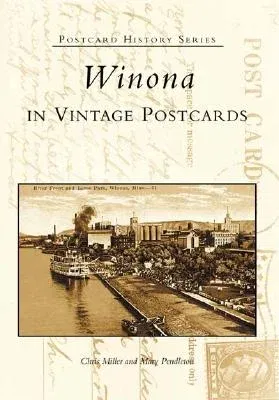Chris Miller
(Author)Winona in Vintage PostcardsPaperback, 1 January 2004

Qty
1
Turbo
Ships in 2 - 3 days
In Stock
Free Delivery
Cash on Delivery
15 Days
Free Returns
Secure Checkout

Part of Series
Postcard History
Print Length
128 pages
Language
English
Publisher
Arcadia Publishing (SC)
Date Published
1 Jan 2004
ISBN-10
0738532290
ISBN-13
9780738532295
Description
Product Details
Authors:
Book Format:
Paperback
Country of Origin:
US
Date Published:
1 January 2004
Dimensions:
23.57 x
16.61 x
0.89 cm
ISBN-10:
0738532290
ISBN-13:
9780738532295
Language:
English
Location:
Charleston, SC
Pages:
128
Publisher:
Series:
Weight:
299.37 gm